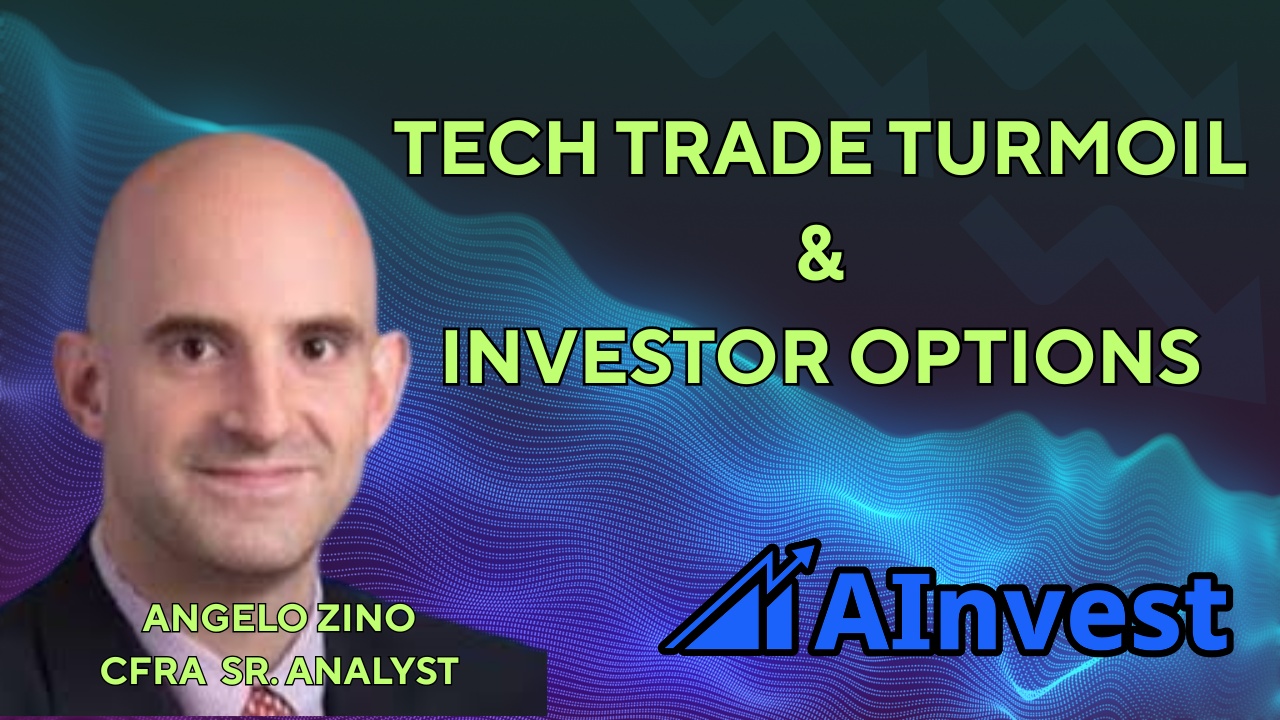Don’t Blink: Tech Investors Brace for More Tariff Shocks Ahead
“Things change within a matter of seconds,” said Angelo Zino, senior equity analyst at CFRA. “You can’t blink.”For investors in the technology sector, that kind of volatility has become the new normal

“Things change within a matter of seconds,” said Angelo Zino, senior equity analyst at CFRA. “You can’t blink.”
For investors in the technology sector, that kind of volatility has become the new normal. As the Trump administration shifts gears on trade policy, the market is digesting a sudden round of tariff exemptions—while bracing for what comes next.
Last week, the White House announced that smartphones, semiconductors, and other key electronics would be temporarily excluded from the proposed 145% reciprocal tariffs on Chinese imports. The move, which came after intense lobbying from industry leaders, offered a reprieve for companies such as apple inc., nvidia Corp., and other large-cap tech names. But analysts and investors say the exemption is neither comprehensive nor permanent.
“This took the doomsday scenario off the table,” wrote analysts at Wedbush Securities in a note to clients. “But the mass confusion created by this constant news flow… is dizzying for the industry and investors and creating massive uncertainty.”
Officials have signaled that tariffs targeting the semiconductor sector—including components used in smartphones, PCs, and servers—could still be implemented in the coming weeks. That has left companies scrambling to make supply chain decisions without clear policy guidelines, and investors struggling to price in geopolitical risk.
Short-Term Relief, Long-Term Questions
Apple emerged as one of the biggest beneficiaries of the initial exemption. Analysts estimate that without tariff relief, the price of some high-end iPhones could have exceeded $2,000, a move likely to dent consumer demand. For now, apple avoids that outcome.
“AAPL is clearly the biggest winner across the technology space,” Zino wrote in a CFRA note released Monday. He said the exemption helps Apple stabilize short-term revenue expectations and maintain pricing power heading into the second half of the year.
Still, Apple is not entirely in the clear. A separate 20% tariff on Chinese imports linked to fentanyl enforcement remains in place and is not covered under the exemption. Analysts at both CFRA and Wedbush say the company could also face new levies later this year, depending on the trajectory of U.S.–China trade negotiations.
The tech giant is expected to accelerate its long-term diversification strategy, with a particular focus on expanding manufacturing capacity in India and increasing U.S.-based chip production. “There is no reason Apple can’t have its internally designed processors manufactured in the U.S.,” Zino said, pointing to Taiwan Semiconductor Manufacturing Co.'s planned expansion in Arizona.
Navigating Policy Volatility
For investors, the erratic policy environment has become a larger concern than the tariffs themselves. The rapid sequence of announcements—first imposing tariffs, then exempting sectors, then reclassifying exemptions—has made it difficult to assess risk.
“This is like changing the hole locations at Augusta while the final round is going on,” said Dan Ives, managing director at Wedbush.
Zino said many investors underestimate the time horizon required to navigate this level of uncertainty. “Most investors say they have a long-term view,” he said. “But the reality is they don’t. You have to be willing to take the roller coaster ride, or you’ll get shaken out.”
Wedbush projects that Apple’s earnings per share in 2025 and 2026 could fall by about 10% under a base-case scenario that assumes modest tariff impact. In a worst-case scenario, where full tariffs are implemented and trade negotiations stall, EPS could decline by as much as 20%.
Still, both firms maintain positive long-term outlooks on Apple, citing its robust installed base, sticky ecosystem, and growing services revenue as insulation against short-term shocks.
As for the broader tech sector, analysts are watching closely for further clarity from the White House. Whether additional tariffs will be introduced—or rolled back again—remains unclear.
For now, investors are left with a volatile policy backdrop and a critical choice: stay invested and ride out the uncertainty, or step back and risk missing long-term upside. As Zino put it, “If you’re in, you’d better be in for the long haul.”
Disclaimer: The views in this article are from the original Creator and do not represent the views or position of Hawk Insight. The content of the article is for reference, communication and learning only, and does not constitute investment advice. If it involves copyright issues, please contact us for deletion.